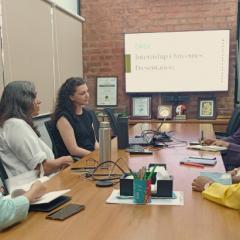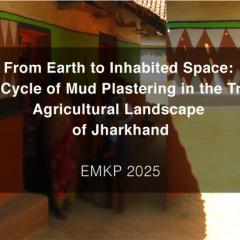
Making Urban Planning Work for Indian Cities: LAP and TPS Approach
Fri, January 03, 2020 Conferences
The national conference ‘Making Urban Planning Work for Indian Cities: LAP + TPS Approach’ was held on 27 Dec at CEPT. It addressed key issues impeding planning processes, to re-think them in tandem with Local Area Plans (LAP) and Town Planning Schemes (TPS). Organized by CRDF and Shakti Sustainable Energy Foundation (SSEF) with support of Ministry of Housing and Urban Affairs (MoHUA), the conference saw participation of faculty and senior-level policy makers across India.
Dr. Rutul Joshi, FP Faculty, opened the conference in presence of C K. Koshy, IAS along with other eminent guests and participants. C.K Koshy gave the inaugural address where he focused on the twin problems i.e peripheral chaotic expansion in cities and rapid densification of the city center. He remarked the marriage of TPS and LAP was poised to address this problem in cities and highlighted the approach was a win-win situation for the public exchequer and the landowner. Koshy ended his note by mentioning such interactions amongst experts and policy formulators was the key in tackling the problems of urbanization.
A B Gor, IAS, Chief Executive Authority, Ahmedabad Urban Development Authority (AUDA), spoke about the urban planning experience in Ahmedabad and the synergies between AUDA, AMC and many other public bodies that were crucial in ensuring a substantial change on the ground. He highlighted the example of how SP ring road was carved out using the Land Pooling and TPS mechanism and detailed the fiscal and spatial aspects of TPS and Development Plan.
P L Sharma, Chief Town Planner, Gujarat Industries Development Board (GIDB), spoke on the replicability and scalability of Town Planning Schemes drawing cues from the Gujarat experience. He mentions the flexibility that TPS brings into the process, allows it to adjust on a case to case basis. Prof. Vidhyadhar Phatak spoke on Land-based Fiscal tools, its development over the years, various types of land-based fiscal tools, differences between taxes and charges, its implementability and how these tools can provide better fiscal sustainability to the city’s finances. All speakers fielded questions from the participants on the policy and legislative amendments required for its implementation in their cities.
The workshop also saw technical sessions by Prof Jignesh Mehta and Dr. Rutul Joshi who spoke on the nuances of LAP and principles of transit respectively. Prof Jignesh Mehta, FP faculty, spoke about how rapid urbanization means more floor space which translates to optimum and efficient use of land. He highlighted the various planning process and tools used in Gujarat, Delhi and Jaipur and explained in detail why LAP situated in the statutory planning framework can be used to improve local areas and be coupled along with transit corridors and heritage sites in the city. He used the example of Local Area Planning in Ashram Road CBD in Ahmedabad to detail the concepts and driving principles behind LAP.
Dr. Rutul Joshi spoke about the principles of transit around LAP. He mentions the dire situations of streets in Indian cities as congested, made for cars than people and how the idea of transit planning for Indian cities needs to be merged with public realm planning in India. He also highlighted the key findings from the Transit-Oriented Development (TOD) project and how a robust street grid can ensure accessibility to transit stations and thereby encouraging use of the same. He also highlighted how cities have poorly managed the parking demand in cities and how parking has occupied prime real estate and public spaces in our cities.
Recent Updates

